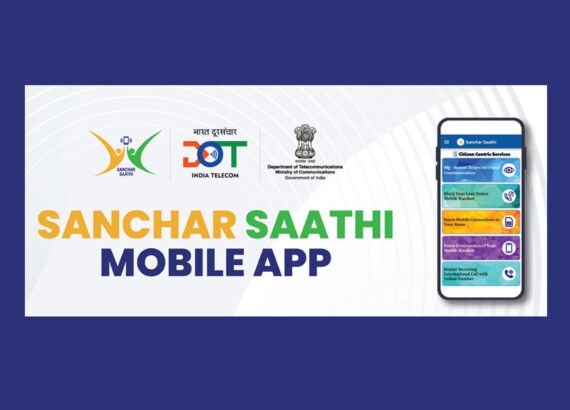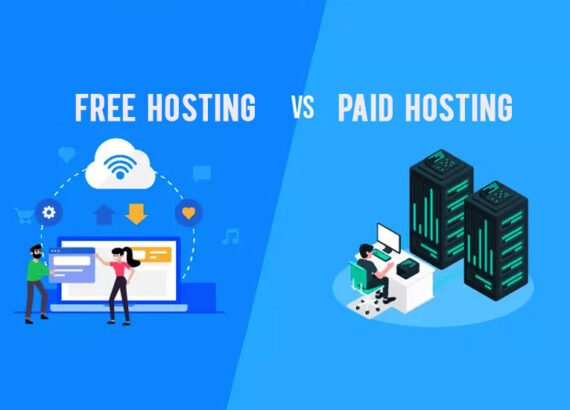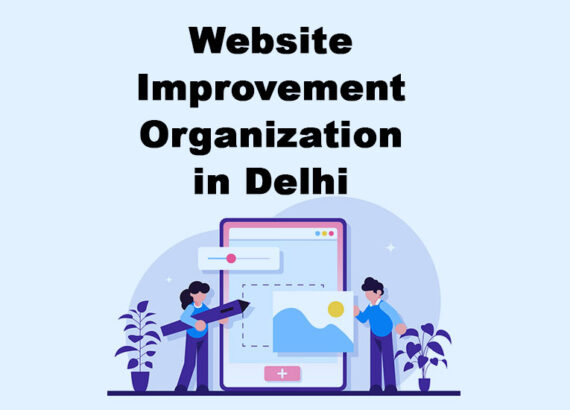Step-by-Step Guide: How to Create Your Successful Mobile App
Welcome to our comprehensive guide on creating your very own successful mobile app. With the ever-increasing popularity of smartphones and mobile devices, developing an app has become a lucrative venture for many entrepreneurs and businesses. However, the process of creating a mobile app can be complex and daunting without the right knowledge and guidance.
In this article, we will provide you with a step-by-step approach to help you navigate through the app development process, from conceptualization to launching and beyond. Whether you are an aspiring app developer or a business owner looking to expand your reach through mobile technology, this guide will equip you with the necessary insights and strategies to create a remarkable mobile app that resonates with your target audience.
Let’s dive in and explore the key steps involved in building a successful mobile app, including understanding the development process, defining your app’s purpose and target audience, planning and researching your app idea, designing a user-friendly interface, developing and testing the app, implementing effective marketing strategies, and launching your app while gathering user feedback.
1. Understanding the Mobile App Development Process
Differentiating between Native, Web, and Hybrid Apps
So, you’ve got this great idea for a mobile app, but you’re not quite sure where to start. First things first, let’s understand the different types of apps out there. Native apps are like the cool kids on the block, specifically designed for a particular operating system like iOS or Android. Web apps, on the other hand, are like the chameleons of the app world – they run on web browsers and can work across multiple platforms. Then we have hybrid apps, which are a mix of native and web apps, offering the best of both worlds. Knowing the difference will help you make an informed decision about which type suits your app idea best.
Exploring the App Development Lifecycle
Creating a mobile app is a journey, my friend, and like any journey, it has its lifecycle. Understanding this process will not only help you stay organized but also give you a sense of accomplishment as you check off each milestone. The app development lifecycle typically involves steps like ideation, planning, designing, development, testing, and finally, launching your masterpiece into the world. So, buckle up and get ready to take your app idea on this exciting adventure!
2. Defining Your App’s Purpose and Target Audience
Identifying the Problem Your App Will Solve
To create a successful app, you need to have a clear purpose in mind. Think about the problem you want your app to solve or the need you want it to fulfil. Maybe you want to make ordering pizza as easy as tapping a button, or perhaps you want to help people track their daily fitness goals. Whatever it may be, identifying the problem your app will solve will give it direction and make it more appealing to potential users.
Conducting Market Research and Identifying Target Users
Now that you know your app’s purpose, it’s time to dive into some market research. Who are your ideal users? What are their preferences and pain points? Understanding your target audience will help you tailor your app to their needs and stand out from the competition. Conduct surveys, analyze user data, and gather feedback to get a clear picture of who your app will serve. Remember, knowing your audience is the key to creating an app that people will love.

3. Planning and Researching Your App Idea
Conducting a Competitive Analysis
Before you start building your app empire, it’s essential to know what’s already out there. Conducting a competitive analysis will give you insights into similar apps in the market, their features, and user feedback. This research will help you identify gaps or areas for improvement, ensuring your app stands out like a unicorn in a sea of horses.
Creating a Feature List and Wireframing
Once you have an understanding of your competition, it’s time to start brainstorming and creating a feature list for your app. What features are essential? Which ones will make your app shine? Consider the user experience and prioritize features that align with your app’s purpose and target audience. Once you have your features sorted, start wireframing – sketching out the layout and functionality of your app. Think of it as creating a blueprint for your app’s design and functionality.
4. Designing an Intuitive and User-Friendly App Interface
Understanding User Experience (UX) Design Principles
Now, let’s talk about the visual appeal and user experience of your app. User experience (UX) design is all about making your app intuitive, easy to navigate, and visually pleasing. Keep in mind principles like simplicity, consistency, and clear navigation to create an interface that users will love. After all, a well-designed app is like a good friend – easy to understand and enjoyable to spend time with.
Creating Mockups and Prototypes
Before diving into the actual development, creating mockups and prototypes of your app can save you time and headaches. Mockups give you a visual representation of your app’s design, while interactive prototypes allow you to test and refine the user experience. So, grab a cup of coffee, get your creative juices flowing, and bring your app to life on paper or using design tools. Trust me, this step will make the app development process smoother and more efficient.
Congratulations! You now have a step-by-step guide to creating your successful mobile app. Remember, while building your app, stay open to learning, adapt as needed, and embrace the occasional bumps in the road. Now go forth, app creator, and let your brilliant idea shine in the mobile app universe!
5. Developing and Testing Your Mobile App
Choosing the Right App Development Framework
Choosing the right app development framework can feel like trying to pick the perfect avocado at the grocery store – it’s overwhelming and you never really know what you’re going to get. But fear not! Think about your app’s requirements, your team’s skillset, and the platform you’re targeting. Look for frameworks that are flexible, well-supported, and have a vibrant community. Remember, just like a good guacamole, the right framework can make all the difference!
Coding and Implementing App Functionality
Ah, coding – the language of the tech gods. When it comes to implementing app functionality, it’s important to break it down into bite-sized chunks (think tapas portions, not a buffet). Start with the core features and build from there. Don’t forget to keep your code clean, organized, and well-documented – it’s like having a chef’s knife that never gets dull. And remember, Rome wasn’t built in a day, so don’t rush the process. Take your time to ensure each function works smoothly and seamlessly.
Conducting Thorough Testing and Debugging
Testing your app is like giving it a good rubdown – it helps you identify any kinks or sore spots. Don’t skip this step, unless you enjoy receiving angry messages from users. Put your app through its paces, test every nook and cranny, and squash those bugs like the heroic exterminator you are. And speaking of bugs, prepare yourself for a game of hide-and-seek. Debugging can sometimes feel like trying to find your keys in the dark – frustrating and full of expletives. But fear not, with a bit of patience and a heavy dose of determination, you’ll conquer those pesky bugs and emerge victorious.

6. Implementing Effective Marketing Strategies for App Success
Creating a Marketing Plan and Budget
Creating a marketing plan and budget is like trying to decide what toppings to put on your pizza – choices, choices, choices! Start by defining your target audience and how you can reach them. Then, set a realistic budget that won’t drain your bank account faster than a leaky faucet. Remember, marketing is like adding extra cheese to your app – it makes it even more delicious, but you have to be strategic about it.
App Store Optimization (ASO) Techniques
App Store Optimization (ASO) is like the secret sauce of app success. It’s all about making your app more visible and enticing in the app store. Use relevant keywords, compelling app descriptions, and eye-catching screenshots to grab users’ attention. Think of ASO as your app’s fashion makeover – a little bit of style and flair go a long way in the app store runway.
Utilizing Social Media and Online Advertising
Social media and online advertising are like the dynamic duo of app promotion. Harness the power of social media platforms to connect with your target audience, share updates, and build excitement. As for online advertising, think of it as your app’s billboard on the digital highway. Invest in targeted ads to reach potential users and drive downloads. Just remember, don’t be that obnoxious neighbour who knocks on everyone’s door trying to sell them something – be creative, engaging, and authentic.
7. Launching Your Mobile App and Gathering User Feedback
Preparing for App Submission and Launch
Preparing for app submission and launch is like getting ready for a first date – you want to make a good impression and have everything in place. Test your app thoroughly, ensure it meets the app store guidelines, and have all your app assets ready to go. Think of this process as your app’s debut – you want to shine and leave users wanting more.
Monitoring User Feedback and Making Iterative Improvements
User feedback is like a treasure map leading you to app improvement gold. Pay attention to user reviews, listen to their suggestions, and address any issues promptly. Remember, you’re not launching a perfect app (if there even is such a thing). Instead, treat your app like a work in progress – continuously making updates and improvements based on user feedback. It’s like having a personal stylist who helps you update your wardrobe to the latest trends. So don’t be afraid to pivot, adjust, and grow with your users.
Conclusion
Creating a successful mobile app is a rewarding and fulfilling endeavour, but it requires careful planning, execution, and continuous improvement. By following the step-by-step guide outlined in this article, you will be well-equipped to embark on your app development journey with confidence. Remember to stay focused on your app’s purpose, prioritize the user experience, and adapt to the ever-evolving mobile landscape. With dedication, perseverance, and the right strategies, your mobile app has the potential to make a significant impact in the digital world. Good luck on your app development journey!

FAQ
Q: Do I need any coding experience to create a mobile app?
Ans: While having coding experience can be beneficial, it is not a prerequisite for creating a mobile app. There are various app development frameworks and tools available that offer a more visual and user-friendly approach to app creation, allowing individuals with little to no coding experience to build their apps. However, having a basic understanding of programming concepts can still help customize and troubleshoot your app.
Q: How long does it take to develop a mobile app?
Ans: The time it takes to develop a mobile app can vary depending on various factors, including the complexity of the app, the features and functionality involved, the development resources available, and the level of expertise of the development team. In general, creating a high-quality mobile app can take anywhere from a few weeks to several months. It is important to allocate sufficient time for planning, design, development, testing, and iteration to ensure the best possible outcome.
Q: How can I market my mobile app effectively?
Ans: Marketing your mobile app is crucial to its success. Some effective strategies for app marketing include optimizing your app store listing with relevant keywords and compelling descriptions, leveraging social media platforms to generate buzz and engage with your target audience, utilizing online advertising channels, partnering with influencers or industry experts, and implementing app analytics to gather insights and make data-driven marketing decisions. It is important to create a comprehensive marketing plan tailored to your app’s target audience and objectives.
Q: What should I do after launching my mobile app?
Ans: Launching your mobile app is just the beginning of your app journey. After launch, it is important to actively gather user feedback and reviews to understand how users are interacting with your app and identify areas for improvement. Continuously update and enhance your app based on user feedback and market trends. Additionally, monitor app analytics to gain insights into user behaviour and engagement. Regularly promote your app through various marketing channels to maintain visibility and attract new users. Ongoing maintenance and updates are essential to keep your app relevant and successful.
Thank you for reading 🙂


















